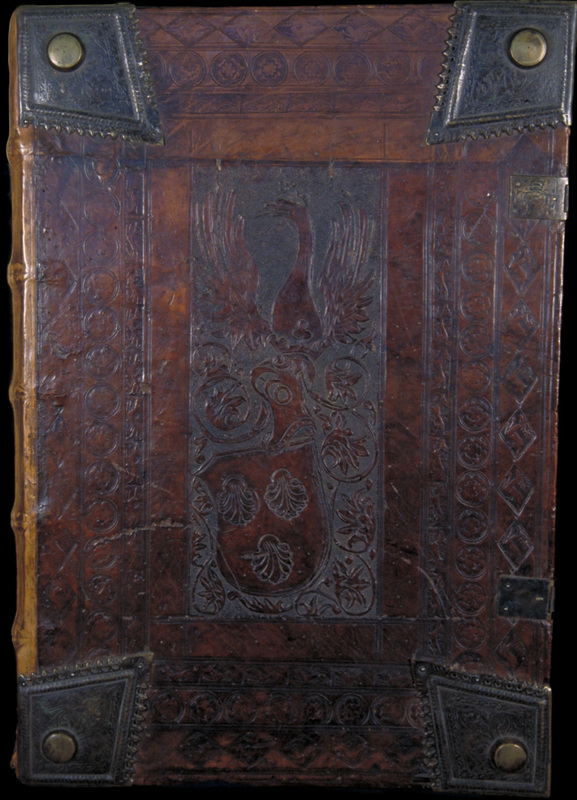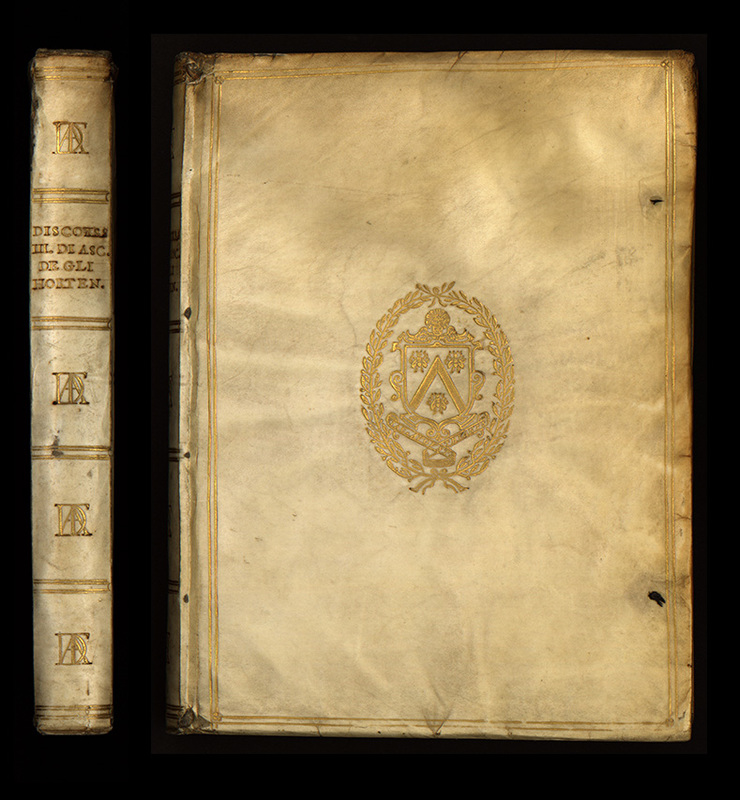Bring Out Your Bindings!
Bindings of manuscripts and early printed books often unveil fascinating information about their previous owners and the cultural setting where these books were originally read. This magnificent fifteenth-century German manuscript was bound with pigskin over wooden boards, including a protective metal furniture consisting of five bosses on each cover. The front cover also has a small rectangular piece of parchment with the title of the volume. More importantly, our copy also includes a chain attachment. By the end of the thirteenth century, in order to avoid theft, some monastic and university libraries began to chain their books. In the early-chained libraries, books were laid on a long lectern at which readers could sit. By the fifteenth century, however, chained books were shelved upright on the shelves of bookcases, each of which containing two or three shelves. In front of the lowest shelf there was a reading desk so that the length of the chain obviously depended on where the book had been shelved.
In the words of Dennis E. Rhodes: "The Pantheologia of Rainerius de Pisis, the Dominican who died in 1351, must be one of the longest books ever composed in the Middle Ages." Our library only holds the second of what was indeed an extremely large two-volume set. Our volume has been bound with decorated calfskin over wooden boards. As seen in the front cover displayed below, the binding also has decorated metal furniture on the corners, including also catch plates on the edges. On the leather, the vertical sides of the cover are adorned with three types of stamps: a fox or dog, a rosette, and a stag. However, the decoration of the central panel of the leather was done using a technique known as cut leather or "cuir-ciselé," that is, the main design is cut directly into dampened leather instead of being tooled or engraved with a metal stamp. After the design is drawn with a pointed tool and then dampened, it is next worked into relief by depressing the background by means of stamping continuous lines of dots with a pointed tool. Julia Miller has attributed our binding to the well-known German craftsman, Mair Jaffe. The central design represents the coat of arms of Archbishop Albrecht von Eyb of Nuremberg, a writer and bibliophile who owned other bindings decorated by Jaffe.
Jacques-Auguste de Thou (1553-1617) was a French historian and politician who built one of the greatest libraries of his age, reaching around 13,000 volumes at the time of de Thou's death. Being dispersed in numerous European and American libraries, de Thou's books are easily identified by the stamp of his coat of arms. The following three books were part of this legendary library, also representing three different stages in de Thou's life. The first one includes his arms, the gadfly device, as well as the monogram combining the letters "A", "D", "T". The second adds the arms of his first wife, Marie Barbançon, with the monogram consisting of "I", "A" and "M". And the third includes the arms of his second wife, Gasparde de la Chastre, with Marie's "M" being replaced with a "G".

Readers on the Margins

About the Exhibit





